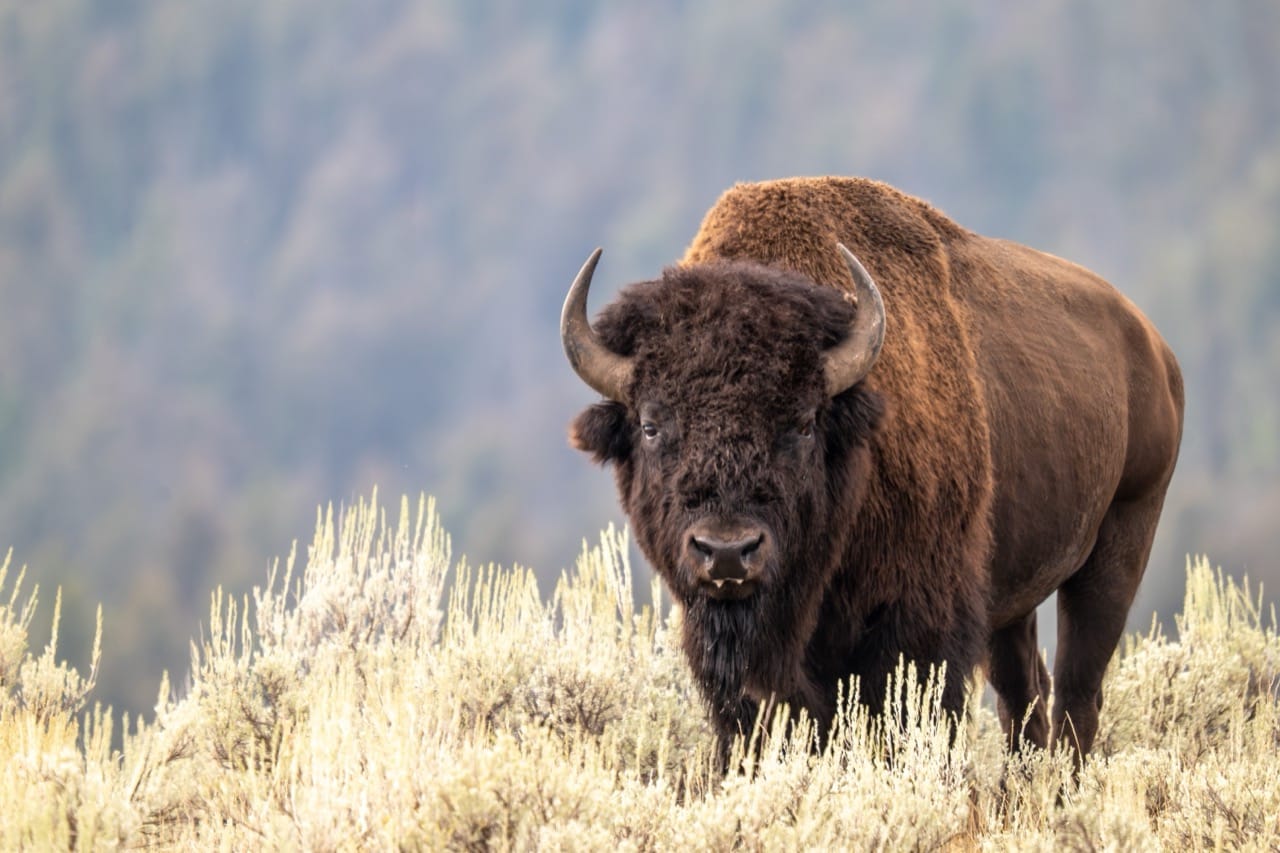Imagine standing on a vast, open prairie, the wind whispering through the tall grasses, and suddenly, a massive, dark shape emerges. It’s the American Bison, a symbol of the wild frontier and a pivotal character in North America’s ecological and cultural history. This iconic creature, with its shaggy mane and formidable presence, has roamed the continent for thousands of years, playing a crucial role in the ecosystems and the lives of Native American tribes. The bison’s story of resilience and recovery, from near extinction to conservation triumph, continues to captivate and inspire.
Characteristics / Physical Description
The American Bison, often mistakenly called buffalo, is a robust animal with a massive head, broad shoulders, and a distinctive hump. The adult bison can weigh up to 2,000 pounds and stand about six feet tall at the shoulders. They have a thick, shaggy coat of fur, which helps them endure the harsh winters. Their coat is darker on the forequarters and lighter on the hindquarters, and they shed heavily in the spring. Bison also have short, curved horns that both males and females use for defense and dominance contests.
Taxonomy and Classification
Scientifically known as Bison bison, the American Bison belongs to the family Bovidae, which includes other large, hoofed mammals like cattle, goats, and sheep. There are two subspecies: the plains bison, which is more common and slightly smaller, and the wood bison, which is larger and found primarily in Canadian forests.
Behavior and Social Structure
Bison are social animals and typically form herds. Herd structures can vary, but they are often matriarchal, led by older, experienced females. These herds serve multiple purposes, from protection against predators like wolves and bears to helping locate food sources. Bison communicate through grunts and body language. During the mating season, known as the rut, males display aggressive behaviors and compete for mates through bellowing, wallowing, and sometimes intense physical confrontations.
Habitat and Distribution
Historically, bison were widespread across North America, from Alaska to Mexico. Today, they are primarily found in protected areas, national parks, and private reserves. The largest free-ranging herd resides in Yellowstone National Park. Bison are adaptable and can thrive in various habitats, from grasslands to forests, as long as they have access to grazing areas and water sources.
Diet and Feeding Habits
As herbivores, bison primarily feed on grasses, herbs, and shrubs. They have a ruminant digestive system, allowing them to break down tough plant materials efficiently. Bison graze extensively, often moving continuously as they eat to allow for regrowth in areas they have previously fed.
Breeding and Reproduction
The breeding season peaks in July and August, with males competing for access to females. After a gestation period of about nine months, females give birth to a single calf in the spring. Calves are born with reddish-brown fur and can walk within hours of birth. They are weaned at around seven months old but may stay with their mother for over a year.
Relationship with Humans
Bison have a complex relationship with humans. They were essential to the survival of many Native American tribes, providing meat, hides, and other materials. However, extensive hunting and habitat loss due to European settlement drove them to the brink of extinction in the late 19th century. Conservation efforts in the 20th century have successfully revived populations, though they are still dependent on human-managed programs for their continued survival.
Evolutionary History
Bison evolved from ancient bovines that crossed into North America from Asia via the Bering Land Bridge. Over thousands of years, they adapted to a variety of climates and landscapes, becoming one of the continent’s dominant herbivores.
Use as Research Animals
While not typically used in laboratory settings, bison are subjects of ecological and environmental research. Studies often focus on their impact on ecosystems, their role in prairie restoration, and their responses to climate change.

